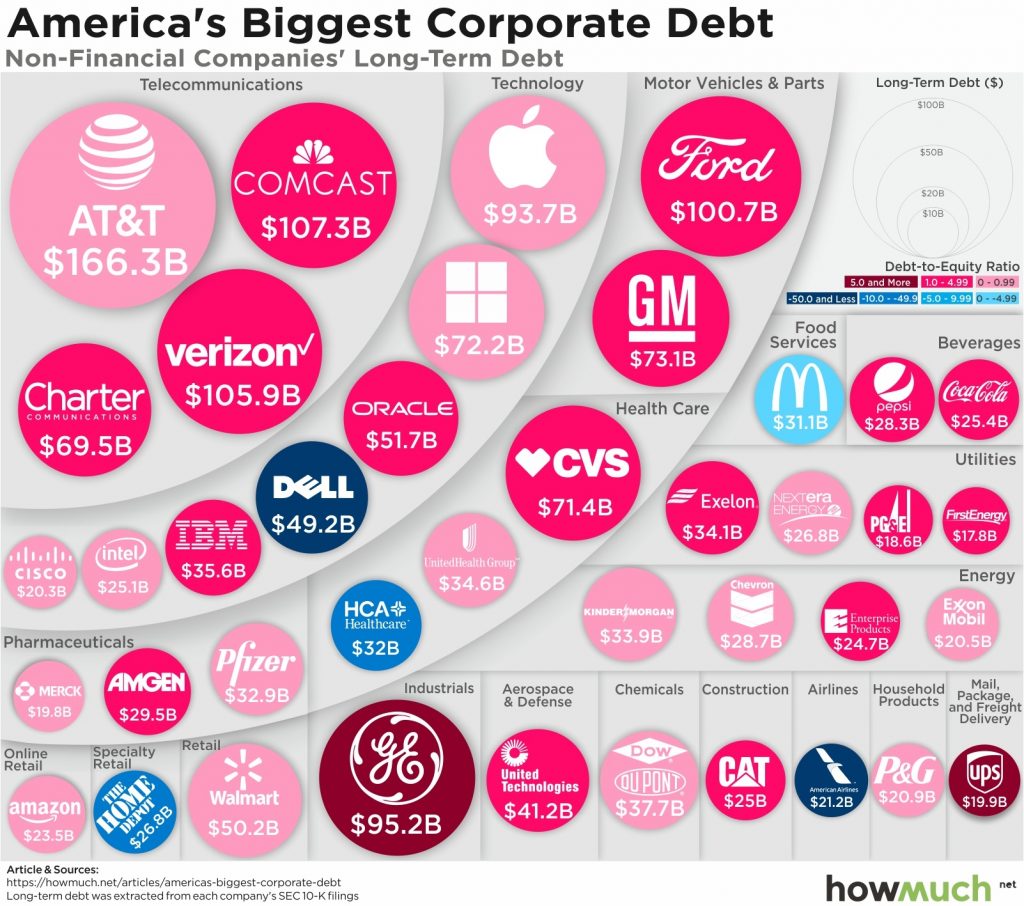Submitted by Taps Coogan on the 25th of July 2019 to The Sounding Line.
Enjoy The Sounding Line? Click here to subscribe for free.
Enjoy The Sounding Line? Click here to subscribe.
The following visualization, from the cost-estimation website HowMuch.net, shows the largest non-financial corporate debts in the United States based on data from 24/7 Wall Street.

Since the Financial Crisis, the United States has witnessed the largest increase in corporate indebtedness on record, a by-product of a decade of artificially low interest rates. The graphic above helps visualize one part of that indebtedness: long term corporate debt. The graphic groups companies by sector and colors them based on their debt-to-equity ratio, with dark red signifying a higher debt-to-equity ratio and blue signifying a low ratio.
The three companies with the highest long term debt are all telecommunications companies: AT&T ($166.3 billion), Comcast ($107.3 billion), and Verizon ($105.9 billion). Following these companies is Ford ($100.7 billion) and GE ($95.2 billion). While GE is famously indebted, some of its debt is from its financial business, making it an apples-to-oranges comparison vis-a-vis other non-financial companies.
The companies with the highest debt-to-equity ratios are: GE (8.35), UPS (6.56), Ford (2), First Energy (2.61), and Amgen (2.36).
The question moving forward is how financial markets can continue to simultaneously fund swelling corporate and government bond markets when the monetary base in the US is actually shrinking due to the Fed’s balance sheet reductions.

At some fast approaching point, it will become more-or-less mathematically impossible to fund continued growth in bond markets without regrowing the monetary base. That means that we are headed for either higher interest rates or more QE and everybody knows that central banks won’t permit higher rates.
Would you like to be notified when we publish a new article on The Sounding Line? Click here to subscribe for free.
Would you like to be notified when we publish a new article on The Sounding Line? Click here to subscribe for free.

